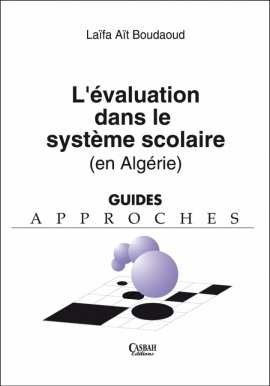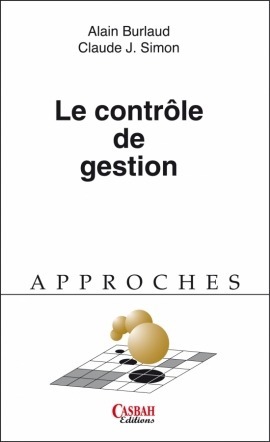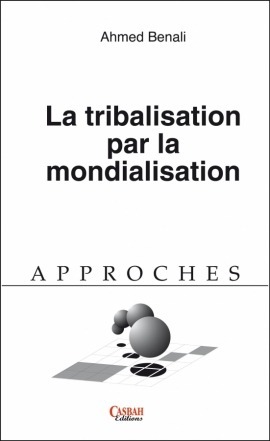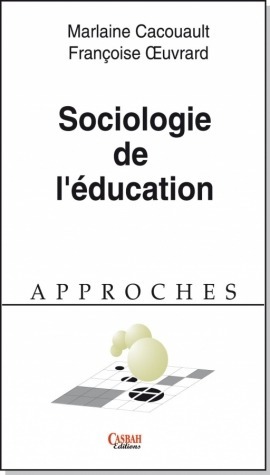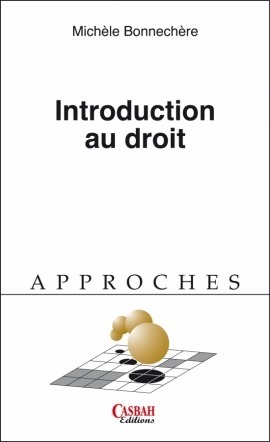L’évaluation dans le système scolaire (en Algérie) – Laïfa Aït Boudaoud
200,00 د.ج
Préparer les épreuves des examens, les corriger, attribuer des notes et des appréciations constituent pour les enseignants des activités parfois bien plus difficiles que l’acte d’enseigner en lui-même. Les questions qui viennent à l’esprit chaque fois que l’on veut évaluer sont nombreuses et variées : pourquoi et pour quoi évaluer ? Sur quels principes doit reposer cette activité ? Comment évaluer ? Selon quelle méthodologie ? Avec quoi ? …
C’est à ce genre de questions que l’auteur répond dans cet ouvrage.
:12.0pt;font-family:”Times New Roman”,”serif”; mso-fareast-language:FR’>Ses auteurs montrent que ses limites ne sont pas seulement techniques mais également idéologiques. Ils présentent enfin les développements récents du contrôle de gestion. Ils intègrent notamment les apports de la sociologie des organisations, une réflexion sur les structures et la stratégie, ainsi que sur les outils de gestion.
Préparer les épreuves des examens, les corriger, attribuer des notes et des appréciations constituent pour les enseignants des activités parfois bien plus difficiles que l’acte d’enseigner en lui-même. Les questions qui viennent à l’esprit chaque fois que l’on veut évaluer sont nombreuses et variées : pourquoi et pour quoi évaluer ? Sur quels principes doit reposer cette activité ? Comment évaluer ? Selon quelle méthodologie ? Avec quoi ? …
C’est à ce genre de questions que l’auteur répond dans cet ouvrage.
:12.0pt;font-family:”Times New Roman”,”serif”; mso-fareast-language:FR’>Ses auteurs montrent que ses limites ne sont pas seulement techniques mais également idéologiques. Ils présentent enfin les développements récents du contrôle de gestion. Ils intègrent notamment les apports de la sociologie des organisations, une réflexion sur les structures et la stratégie, ainsi que sur les outils de gestion.
| Editeur |
|---|
Produits similaires
Solved Problems On Electrical Engineering : +130 Solved problems – Pr. RAHMOUNE CHEMSEDDINE
This book was intended for students in scientific and technical fields of universities and engineering schools. It provides a technical support on electrical engineering fundamentals and covers the majority of electricity and electrical circuits bases topics, ranging from AC single phase circuits to magnetic and three phases circuits systems.
It contains lectures and fundamental notions in electrical engineering as successive chapters aimed to prepare and guide readers to start and navigate in this fascinating and vast world.
To better support students, problems are presented at the end of each chapter.
This first part of fundamental electrical engineering covers six chapters. The first chapter covers complex numbers. The second chapter addresses the Fundamental laws of electricity. The third and fourth chapters deal with single-phase circuits and three-phase circuits. Finally the fifth and sixth chapters are the last ones where fundamental laws of electromagnetism and magnetic circuits are neatly approached.
This book is particularly aimed at second-year Science and Technology (ST) students, as well as those in other fields with similar programs.
The content of this first part of this book complies with the program of the electrotechnical majors fundamentals. It is recommended and established by the Ministry of Higher Education and Scientific Research (MESRS).
Finaly, I hope that this work will be useful and beneficial to all those who are interested in learning or teaching electrical engineering fundamentals.
Fundamental Electrical Engineering – Pr. RAHMOUNE CHEMSEDDINE
This book was intended for students in scientific and technical fields of universities and engineering schools. It provides a technical support on electrical engineering fundamentals and covers the majority of electricity and electrical circuits bases topics, ranging from AC single phase circuits to magnetic and three phases circuits systems.
It contains lectures and fundamental notion in electrical engineing as successive chapters aimed to prepare and guide readers to start and navigate in this facinatingand vast world.
To better support students, problems are presented at the end of each chapter.
This first part of fundamental electrical engineering covers six chapters. The first chapter covers complex numbers. The second chapter addresses the Fundamental laws of electricity. The third and fourth chapters deal with single-phase circuits and three-phase circuits. Finally the fifth and sixth chapters are the last ones where fundamental laws of electromagnetism and magnetic circuits are neatly approached.
This book is particularly aimed at second-year Science and Technology (ST) students, as well as those in other fields with similar programs.
The content of this first part of this book complies with the program of the electrotechnical majors fundamentals. It is recommended and established by the Ministry of Higher Education and Scientific Research (MESRS).
Finaly, I hope that this work will be useful and beneficial to all those who are interested in learning or teaching electrical engineering fundamentals.

